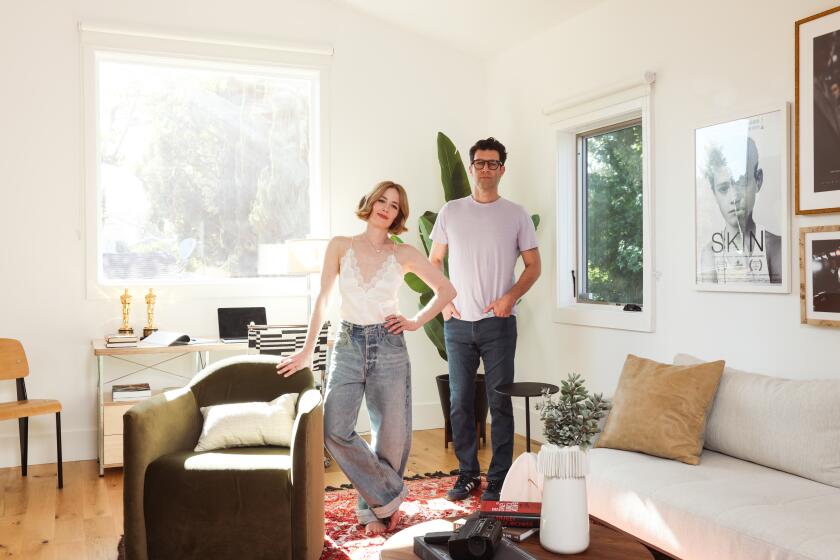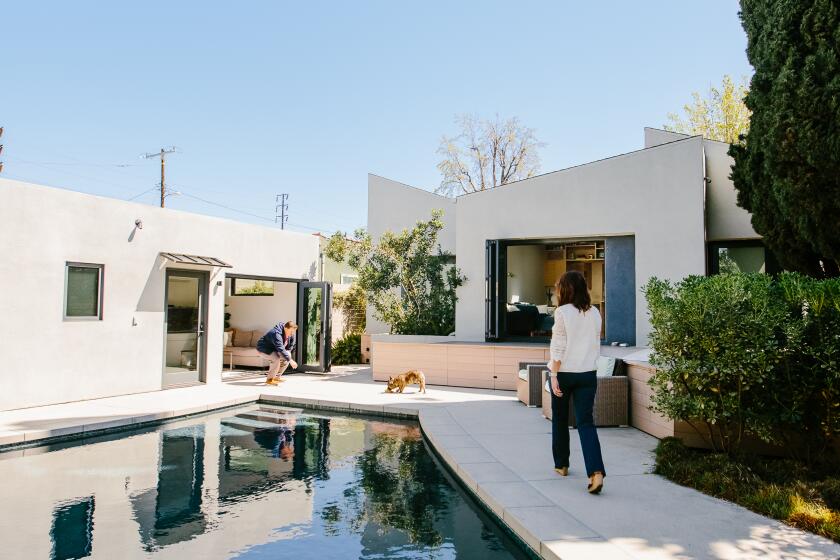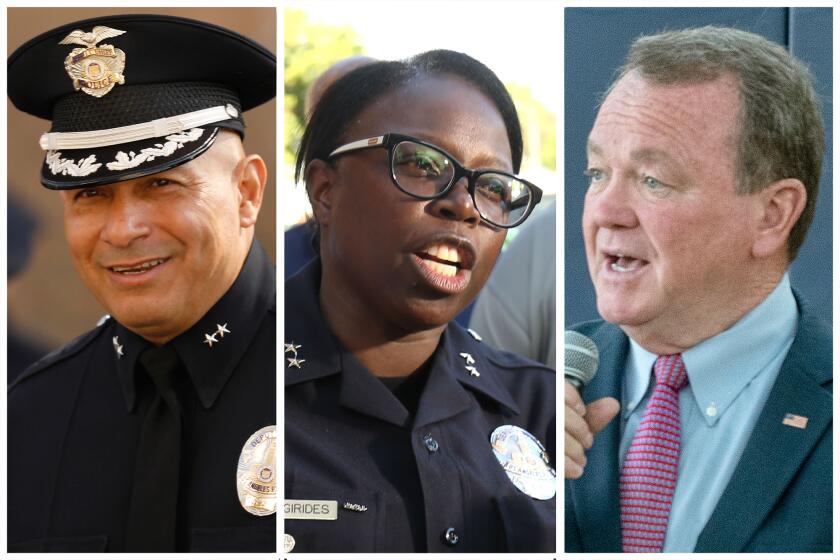Planting the seeds of a future park
Ribbon-cutting ceremonies are still years away. So state parks officials staged a hiring ceremony Friday at a planned 32-acre park on the edge of Chinatown to name a San Francisco-based consulting firm as winner of an international design competition.
Hargreaves Associates’ winning conceptual plan, which calls for the conversion of the former railroad yard into a sweeping greenbelt connected by bridges to nearby neighborhoods and Elysian Park, edged out dozens of other proposals, including one that would have moved Dodger Stadium to the site.
But state parks administrators stopped short of embracing the specifics of Hargreaves’ plan, which suggested a series of cultural gardens to trace the site’s historic heritage, “zero-energy” buildings, artificial wetlands and digital murals to electronically showcase local artists’ work.
Instead, the firm will spend a year coming up with a more precise development plan that could incorporate ideas the state and local groups want included, state parks director Ruth Coleman said.
“It’s still a work in progress. There’s no plan per se,” she told parks activists who gathered at noon at the Cornfield site to learn the winner of the competition.
Officials said the final development proposal for Los Angeles State Historic Park could even borrow ideas from some of the losing competitors’ entries. At an October public hearing, many of those commenting appeared to favor designs submitted by Los Angeles-based Mia Lehrer & Associates.
But forget the baseball stadium relocation, proposed by New York City-based Field Operations.
“That’s not likely,” Coleman said, prompting relieved laughter from the small crowd.
George Hargreaves promised that his designers would be flexible.
“We’re not wedded to anything: ‘This has to go here, that program has to go there,’ ” Hargreaves said. But he promised his designers would create a cohesive master plan despite the past public tug-of-war over the land.
Various factions have clashed over development of the site, with some calling for active recreational facilities, others pressing for a quieter, more passive open space and still others favoring a heavily historic theme.
Situated near where Spanish explorers camped when they first visited Los Angeles, the site was later the city’s first railroad yard. It picked up its Cornfield nickname from stalks of corn that sprouted from seeds spilled from railroad cars pulling into Los Angeles in the 1870s. Chinese laborers who helped build the transcontinental railroad created Los Angeles’ original Chinatown near the rail yard.
When the railroad tracks were removed in the 1990s, the property was earmarked as a warehouse site before activists pressured the state to acquire it in 2001 for $36 million.
Los Angeles historian Leonard Pitt, one of those long involved with the Cornfield preservation effort, said he would fight to have a replica of the city’s first railroad depot built at the park.
“We’re standing above the exact foundation from the first depot and hotel. The depot drew water for the trains’ steam boilers from the madre zanja right over there,” Pitt said Friday, gesturing toward remnants of the fabled “mother ditch” that carried water from the Los Angeles River into the nearby Los Angeles pueblo.
A few steps away, Hargreaves said he was confident activists would unite around his final plan. “It will develop a momentum of its own and people will come to closure,” he predicted.
They may come to need patience too. Actual construction of the park, which could cost from $40 million to $100 million depending on the final plan, is years away, officials said.
More to Read
Sign up for Essential California
The most important California stories and recommendations in your inbox every morning.
You may occasionally receive promotional content from the Los Angeles Times.











